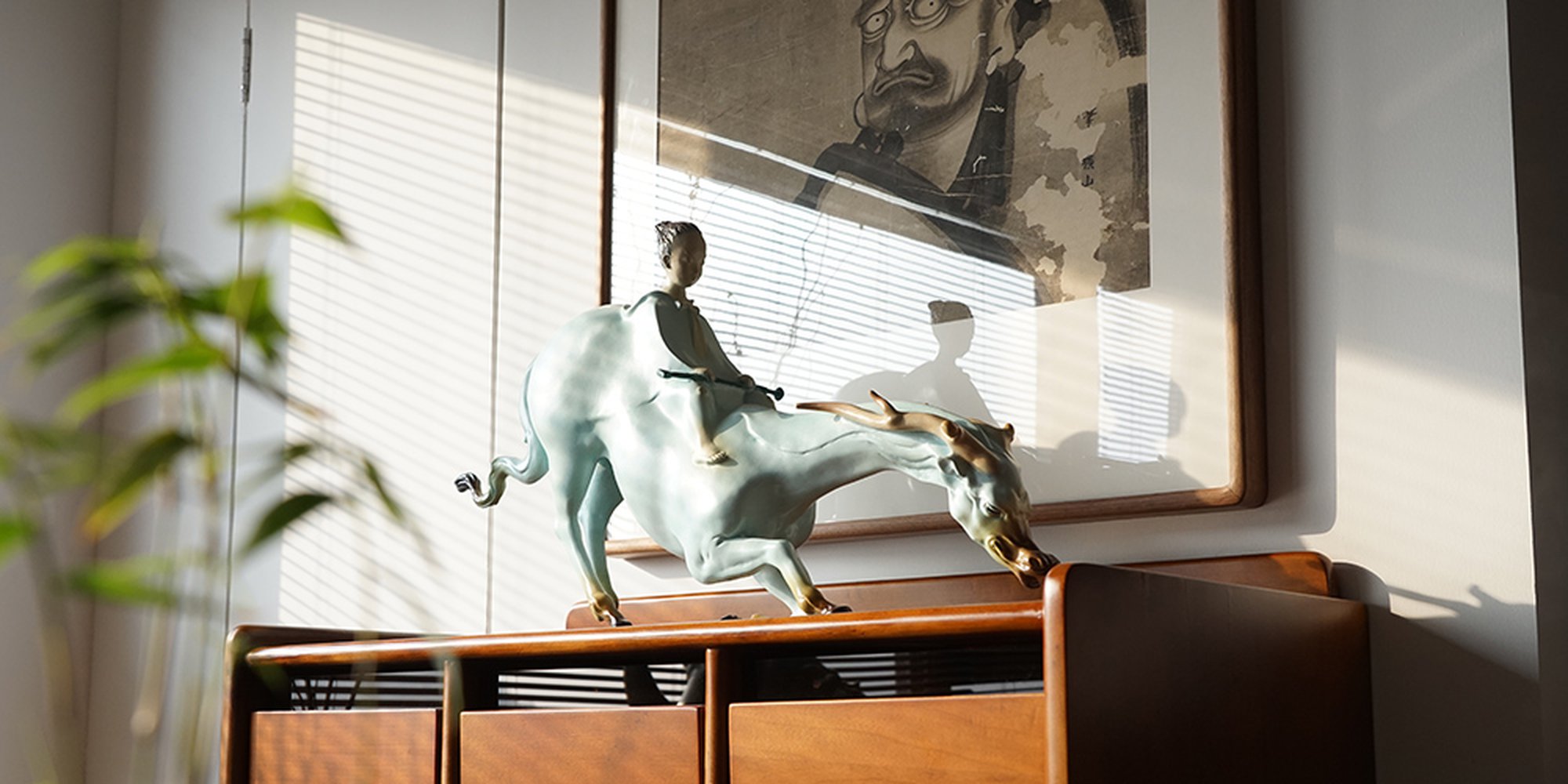We’re not exaggerating when we say that sculpture is an art form as old as civilisation itself. You’ll no doubt have come across sculptures in art galleries, homes, museums and back gardens in your lifetime, which just proves the popularity and continued influence sculptural pieces have today.
Contemporary sculptors not only draw on traditional styles, but also reinterpret them to create new meanings and challenge perceptions. They take these traditions and revert them, twist them, or turn them inside out (literally). Today we’ll be delving into five distinct sculpture styles, so you can figure out which is the best fit your home.
1. Classical sculpture
This likely brings to your mind the art of ancient Greece and Rome, where there was a distinct focus on realism, proportion, and a (somewhat idealised) depiction of beauty. This type of sculpture often depicted gods, heroes, and athletes in lifelike poses. You'll also find a great deal of nude sculpture among these works. The classical sculptors worked hard to convey philosophical ideals with these sculptures such as balance, harmony and humanism.
Classical sculpture flourished between the 5th century BCE and the 4th century CE. The Greeks pioneered techniques such as contrapposto, where figures were depicted with a naturalistic weight shift, making them appear more dynamic. Roman sculptors, influenced by the Greeks, added their emphasis on portraiture and realism, capturing the individual characteristics of their subjects. The Renaissance later revived Classical ideals, further cementing their place in western art.
Today, the Classical style is often reinterpreted with a modern twist. Artists like Damien Hirst and Jeff Koons reference Classical forms but infuse them with contemporary themes, materials, or irony.
2. Abstract sculpture
Move over realism, it’s time to think abstract! Abstract sculpture abandons the depiction of recognisable forms, instead emphasising shapes, colours, and textures. This style prioritises the expression of ideas, emotions, or concepts rather than direct representation — and the results, you’ll find, often play with space, light and texture in unique and defiant ways.
This was also around the time that sculptors began to explore the interplay between positive and negative space, introducing gaps and holes in their works that would change the dynamic of the piece depending on where the viewer was standing.
Emerging in the early 20th century, abstract sculpture was heavily influenced by movements such as Cubism, Futurism, and Constructivism. Artists like Constantin Brâncuși and Pablo Picasso broke away from the constraints of realism, exploring form as an end in itself.
Today, abstract sculpture continues to evolve, often incorporating new materials and technologies. Contemporary artists like Anish Kapoor and Richard Serra push the boundaries of abstraction, using large-scale installations and innovative materials to create immersive experiences.
3. Organic sculpture
Organic art is a huge interior design trend at the moment, and sculpture is no exception. Organic sculpture is inspired by the natural world, drawing from the shapes, textures, and processes found in nature. These sculptures often mimic the fluidity and unpredictability of natural forms, creating works that seem to grow and evolve sort of like plants, trees or fungus.
This style gained prominence in the 20th century with artists like Henry Moore and Barbara Hepworth, who sought to connect their work with the natural world and depict forms from the great outdoors that inspired them.
In contemporary sculpture, organic forms are being explored in new and exciting ways, playing with organic materials like wood and stone as well as texture and form. These works often engage with environmental themes, highlighting the delicate balance between human activity and the natural world.
4. Contemporary sculpture
Contemporary sculpture is what we use to describe the sculpture of today, heavily influenced by politics, the environment and popular culture. The rise of pop art and urban styles also influence contemporary sculpture, with bold, bright and wacky sculptural forms coming to the forefront.
Emerging in the late 20th century, contemporary sculpture is characterised by its diversity and experimentation. Unlike previous styles, contemporary artists are not bound by traditional materials or methods. This period has seen the rise of installation art, mixed media, and interactive sculptures that challenge the viewer’s role in the art experience.
Contemporary sculpture continues to evolve rapidly, with artists like Ai Weiwei, Yayoi Kusama, and Olafur Eliasson leading the way. These artists use sculpture as a platform for activism, social commentary, and immersive experiences.
5. Minimalist sculpture
Minimalist sculpture is defined by its simplicity, focusing on basic geometric forms and materials. This style strips away extraneous details, emphasising the purity of form and the relationship between the object and its surroundings.
Minimalism emerged in the 1960s as a reaction against the excesses of Abstract Expressionism. Artists like Donald Judd and Carl Andre sought to remove the artist's hand from the work, creating sculptures that were devoid of personal expression. These sculptures often used industrial materials and were arranged in precise, often repetitive patterns, highlighting the object’s physical presence.
Today, minimalism is being revisited and reinterpreted. Artists on Artfinder such as Tracy Nicholls are expanding the minimalist vocabulary by incorporating light and negative space into their works.
Cover image by Zhao Yongchang 赵永昌


